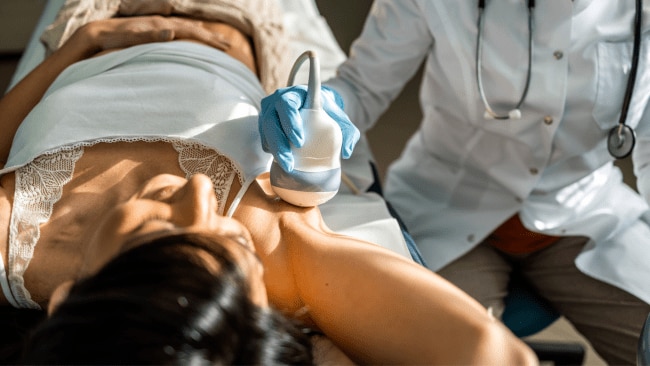What is pre-menstrual dysphoric disorder?
Get to know the signs

Lifestyle
Don't miss out on the headlines from Lifestyle. Followed categories will be added to My News.
In this article:
What is premenstrual dysphoric disorder (PMDD)?
What is the difference between PMS and PMDD?
Different ways PMDD can be managed
Dealing with a menstrual cycle is no easy feat. But for those coping with PMDD, the intense emotional, physical and psychological symptoms can be life-altering.
Every menstrual cycle is unique, often dictating how we feel and how we move during certain days of each month.
While some are lucky to experience regular, pain-free and asymptomatic periods (in other words, a unicorn cycle), most are burdened by at least a few emotional and physical indications their period is incoming – also known as premenstrual syndrome (PMS).
But in some cases, symptoms such as depression, irritability and anxiety are so intense, that premenstrual dysphoric disorder (PMDD) can be diagnosed in individuals.

What is premenstrual dysphoric disorder (PMDD)?
Premenstrual dysphoric disorder (PMDD) is a more intense and complex iteration of premenstrual syndrome, “Marked by significant emotional distress and debilitating physical symptoms that can greatly impact daily functioning,” explains Dr Kavita Krishnan, Perinatal GP.
“It's important to recognise these differences, as PMDD may require a tailored approach to management and treatment, while PMS can often be managed with lifestyle adjustments.”
Caused by a significant drop in hormone levels after ovulation, a person suffering from PMDD is likely to experience severe irritability, depression and anxiety one to two weeks before their period.
Many people with PMDD may also suffer from anxiety or depression, with a higher prevalence of eating disorders and smoking often seen. In some cases, women with PMDD experience suicidal thoughts, especially during the second half of their menstrual cycle.
According to one study, PMDD affects up to 5 per cent of women of childbearing age globally.

What are the symptoms of PMDD?
In short, symptoms of PMDD tend to be similar to those experienced by those with PMS but are far more severe, and at times, debilitating. Occurring one to two weeks before menstrual bleeding, symptoms of PMDD usually subside two to three days after a period starts.
According to the US Department of Health & Human Services, the most common PMDD symptoms include:
- Fatigue and low-energy
- A general lack of interest in daily activities and relationships
- Depression, sadness or hopelessness
- Anxiety
- Suicidal thoughts
- Food cravings or binge eating
- Mood swings
- Bouts of crying
- Panic attacks
- Irritability or anger
- Bloating, breast tenderness, headaches, and joint or muscle pain
- Difficulty sleeping
- Lack of concentration

What is the difference between PMS and PMDD?
Similarly caused by hormone changes during the menstrual cycle, the main difference between both conditions lies in the severity and duration of symptoms experienced.
"We’ve all had bad periods that involve leaking, cramps, lack of sleep, and a desire to consume the world’s supply of ice cream. And while that can be miserable, it’s nothing like PMDD," hormonal health experts Karolina Löfqvist (CEO) and Jasmine Tagesson explain to Yahoo!life.
"Although bad periods and PMDD have a lot in common, PMS doesn't have life-altering implications in the way that PMDD can. PMDD can be serious, but treatment can help reduce symptoms and improve your quality of life."

How is PMDD diagnosed?
Due to the combined psychological, emotional and physical symptoms associated with PMDD, no lab test or physical exam can be used to diagnose a potential case.
Instead, doctors may look at a patient's complete medical history and firstly aim to rule out other conditions with a physical exam (and a pelvic exam), psychiatric testing and thyroid testing.
Women in the process of seeking a diagnosis or concerned about any behavioural or psychological symptoms before or during menstrual bleeding are encouraged to identify and date their most intense symptoms to help their health professional determine the best course of treatment.

How can PMDD be managed?
There are a range of lifestyle choices that can help someone manage their PMDD symptoms. Experts recommended following a healthy diet –cutting back sugary, ultra-processed and salty foods, caffeine and alcohol – and regularly exercising.
Of course, due to the severe nature of some psychological symptoms experienced, health professionals may prescribe more serious treatment courses, such as antidepressant medication.
“PMS usually just needs understanding and support but PMDD can require further interventions. It is very important that women/AFABs know that their symptoms are real and deserve support!” Dr Krishnan says. “Many of my patients have had great success and life-changing experiences once managing their PMDD, and as always with everything with health there is a ladder of interventions.”
In addition to lifestyle modifications, people with PMDD may undergo prescribed Cognitive Behavioural Therapy (CBT) or medication.
“Antidepressants, particularly SSRIs, can be prescribed to help manage severe symptoms,” Dr Krishnan explains. “Hormonal treatments, such as birth control pills may also be considered especially if their PMDD coincides with heavy menstrual bleeding or irregular bleeding.”
More Coverage
Originally published as What is pre-menstrual dysphoric disorder?




